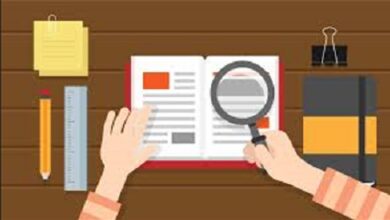Plagiarism in literature review/Common types of plagiarism in Lit. review
Literature Review: Beware of Plagiarism!
An essential topic is to consult the material already produced on the topic we have chosen: main subjects, contextualization, history, among many other points that will serve as a theoretical framework and will make up the bibliographic review of the research or project of research. Plagiarism in literature review
However, we must be careful when using the production of other authors; we have to be careful about plagiarism in the literature review.
In this post, we are going to deal with some items related to the precautions that we must take so as not to incur plagiarism in our academic publications.
Plagiarism in scientific production
Quite simply, it is considered a case of plagiarism when we reproduce an original text without giving due credit to the author, that is, when we make a literal transcription. Also included in the plagiarism situation is to develop your own text based on another author’s ideas without referring to the work and its creator.
The use of plagiarism is considered the worst lack of ethics in the academic world. When an examining board detects bad faith on the part of the writer, it certainly takes the course conclusion work, be it a final report or a thesis, to summary failure. Plagiarism in literature review
By committing plagiarism in scientific articles, the author runs the risk of not only having his publication rejected, but also having his name tied to dishonesty and many “academic career doors” will be closed to them, in addition to being subject to copyright law and of intellectual property.
Be careful not to commit plagiarism in the Literature Review
Sometimes, due to lack of experience or attention, we miss out on entire snippets of plagiarism.
The best strategy to write your scientific text without committing plagiarism is to follow the ABNT standards for scientific writing, citations and references.
A text, supported by referenced citations for assembly and execution, has greater credibility among the scientific community.
The correct way to write your essay is to write in your own words and add a reference to any and all ideas you express. When reading a paragraph of your work where there are no citations, the reader will intuit that the concepts are all yours. If not, it can characterize plagiarism.
The Latin term apud means that you are making a quote that is contained in another quote. A type of indirect quote that should be avoided in your writing, as it can be interpreted as a lack of creativity to write. It should only be used if the information is essential and there is no other alternative to finding the original.
Most common types of plagiarism in literature review
A type of plagiarism that is quite frequent in academic works, it is known as mosaic plagiarism, where the writer gathers excerpts from different sources, makes small modifications, but without giving credit to any of them. The peers in the area who are usually the ones who analyze the works, the copy should be evident.
Beware of plagiarism is not restricted to writing. Publishing quantitative data, images, figures, without a source, is also considered plagiarism within the scientific-academic environment. Plagiarism in literature review
Example : … the number of students who failed grade 6 at XYZ College in 2017 was 34. With 18 over 14 years of age. (Who said?)
Plagiarism is also characterized:
- citing authors who were not consulted
- the inclusion of names of people who did not participate in the elaboration of the work
- the exclusion of those who participated
- claim authorship of work you did not perform
- change the order of nomination of authorship and co-authorship of the works
- and publish the same article in different magazines.
Autoplagiarism is called this when an author repeats entire paragraphs from their own publications in different texts. It is said that he is copying himself.
Beware of plagiarism in literature review and evidence of copying
In general, a text where there is a very large discrepancy between paragraphs, in form and/or content, calls the attention of the examiner. Often, the unsuspecting author uses texts online without knowing that there are already several programs to detect plagiarism or very similar passages in works.
Currently, for most academic papers an electronic copy is required. This is important to make it easier to search for plagiarism in many indexers.
Now that you know more about plagiarism, write your work and bring it to FastFormat to put it within the current ABNT norms and not run the risk of having your document barred.


